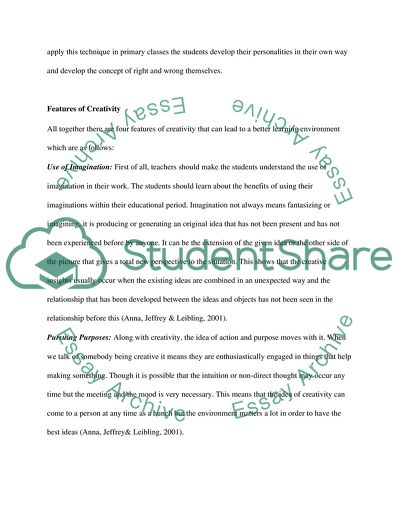Cite this document
(Creativity in Education Essay Example | Topics and Well Written Essays - 2500 words, n.d.)
Creativity in Education Essay Example | Topics and Well Written Essays - 2500 words. Retrieved from https://studentshare.org/education/1736136-broader-curriculum-assignment-how-can-a-teacher-help-children-to-develop-their-creative-abilities-to-produce-outcomes-that-are-both-original-and-of-value
Creativity in Education Essay Example | Topics and Well Written Essays - 2500 words. Retrieved from https://studentshare.org/education/1736136-broader-curriculum-assignment-how-can-a-teacher-help-children-to-develop-their-creative-abilities-to-produce-outcomes-that-are-both-original-and-of-value
(Creativity in Education Essay Example | Topics and Well Written Essays - 2500 Words)
Creativity in Education Essay Example | Topics and Well Written Essays - 2500 Words. https://studentshare.org/education/1736136-broader-curriculum-assignment-how-can-a-teacher-help-children-to-develop-their-creative-abilities-to-produce-outcomes-that-are-both-original-and-of-value.
Creativity in Education Essay Example | Topics and Well Written Essays - 2500 Words. https://studentshare.org/education/1736136-broader-curriculum-assignment-how-can-a-teacher-help-children-to-develop-their-creative-abilities-to-produce-outcomes-that-are-both-original-and-of-value.
“Creativity in Education Essay Example | Topics and Well Written Essays - 2500 Words”, n.d. https://studentshare.org/education/1736136-broader-curriculum-assignment-how-can-a-teacher-help-children-to-develop-their-creative-abilities-to-produce-outcomes-that-are-both-original-and-of-value.


